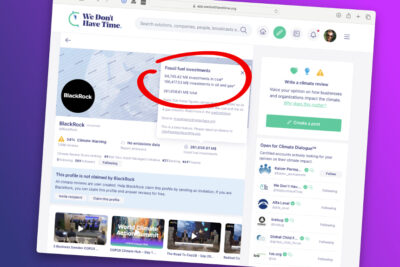Germany’s Plugin EVs Resume Growth, Tesla Model Y Leads

Europe’s largest auto market, Germany, saw plugin electric vehicles take 28.5% market share in August 2022, their best result YTD, though only marginally up on August 2021’s 27.6%. Overall auto volumes were 199,183 units, fractionally up YOY, but dramatically down by some 37% from the 2018-2019 seasonal average of 315,000 units. The Tesla Model Y was the bestselling plugin for the month, thanks in large part to local production.
August’s combined plugin share of 28.5% comprised 16.1% full battery electrics (BEVs), and 12.4% plugin hybrids (PHEVs). This compares to shares of 14.9%, and 12.7%, respectively, YoY.
In sales volume terms, BEVs were up by 10.9% YoY to 32,006 units, and PHEVs up just 1% to 24,719 units.
Most of plugins’ modest gains in share came from a drop in plugless hybrids (HEVs), whose share fell from 18.7% to 17.6% YoY. Combustion-only powertrains were essentially flat YoY, only losing 0.1% in combined share, to 53.1%.
Germany’s Top Selling BEVs
With Tesla’s Grünheide factory reportedly producing 1,200 to 1,500 Model Y vehicles per week (i.e. at least 5,000 per month) as of mid August, delivery volume to Germany (and the rest of Europe) is now starting to see a significant boost. This helped the Model Y register a record 4,216 units in August (way up from the previous monthly record of 2,529 units).
The Model Y saw over 2.6x of the volume of 2nd, and 3rd placed BEVs, the VW ID.4/5, and the Fiat 500e.
Will this kind of volume of Model Y registrations become the new normal in Germany from now on? It seems likely, though Grünheide output will also supply other European LHD markets, currently most significantly; France, Norway, and Sweden.
Each of these countries has already shown they can absorb at least 1,000 Model Ys per month (and the upper limit has not yet been tested). Tesla also has the future option to tweak pricing / variant offerings a bit, to stimulate even more demand if required.
Further down the top 20 ranks, the Seat Cupra Born continued to shine, with a record volume of 1,257 units, and climbing to 8th. The Dacia Spring saw its largest volumes since December, climbing to 5th (1,447 units).
In terms of new faces, well outside the top 20, but worth keeping an eye on, the new Volkswagen ID.Buzz continues to slowly ramp, still at low levels, at 144 units in August (from 34 in July). The MG5 delivered 398 units in August (from a previous record of 99) and climbed to 28th place.
Let’s now step back to get a broader overview spanning the past 3 months:
With its strong August result the Tesla Model Y leads the trailing 3 month rankings, ahead of the Fiat 500e, and Volkswagen ID.4/5. This is a good recovery from Tesla, which — then facing temporary Shanghai supply headwinds — only managed 11th in the March-to-May period.
Other significant climbers since three months ago are:
Other BEV models lost ranking over the intervening 3 months:
Many of those dropping positions are due to temporary allocation decisions of limited factory output, rather than a significant drying up of demand.
Finally, let’s take a peek at the auto manufacturing group rankings over the past three months:
Volkswagen Group still leads comfortably, from Stellantis, still in 2nd. Both increased volume by around 30% since March-to-May.
Climbing from 6th to 3rd, Renault-Nissan Group grew volume by a more modest 14%. Tesla climbed one spot from 5th to 4th, though with only 4% volume growth.
Losing places were Hyundai Motor Group (3rd to 5th), shedding 10% volume, and Mercedes Group (4th to 7th), shedding a significant 43% volume. BMW took advantage, climbing from 7th to 6th, despite 3.4% lower volume than 3 months ago.
With Grünheide ramping, Tesla has some chance to take 3rd, perhaps by the end of this year. But don’t count on it — the continued ramping of the Renault Megane and, soon, the Nissan Ariya, could make that difficult.
Tesla won’t challenge for the top two spots any time soon (given their lead and that both are also growing strongly), but — overall — continues to exert pressure on the legacy auto groups to keep evolving.
Outlook
Germany’s auto industry, which sits at the nexus of Germany’s (and Europe’s) industrial economy, is facing major headwinds.
As an instructive example, Europe’s association of metal producers, Eurometaux, has just sent an open letter to the EU’s political leadership, calling for emergency action on the energy crisis — “to prevent permanent deindustrialisation from spiralling electricity and gas prices.”
Here are some excerpts from the letter:
“50% of the EU’s aluminium and zinc capacity has already been forced offline due to the power crisis, as well as significant curtailments [in other metals]…
“In the last month, several companies have had to announce indefinite closures and many more are on the brink ahead of a life-or-death winter for many operations. Producers face electricity and gas costs over ten times higher than last year, far exceeding the sales price for their products. We know from experience that once a plant is closed it very often becomes a permanent situation, as re-opening implies significant uncertainty and cost.
“Europe’s clean energy goals require a competitive and growing metals sector to ensure a secure supply of the extra raw materials needed to shift away from fossil fuels. Base metals, battery metals, and other metals are all needed in higher volumes for Europe’s grid infrastructure, electric vehicles, solar panels, wind turbines, and hydrogen electrolysers, as well as a complex web of other essential value chains across the European economy.”
The association calls on the EU to adopt a range of emergency measures, and to “Avoid introducing new policy measures that could add to the industry’s production costs. Legal uncertainty and policy predictability is vital for business environment, for Europe’s economic development and avoidable policy-driven cost increases must be reexamined in the light of anticipated inflation and recession.”
This is just one industrial area vital to Europe’s auto industry, and other heavy industry — glass, chemicals (including paints), and many more. Obviously the auto industry depends on the health of all of these upstream supplier industries (as well as on its own access to competitive energy prices). The auto industry also needs consumers who have a stable economic outlook and are able to spend on new cars.
Right now, there seems to be a delay in suppliers getting their message across to automakers. The IFO institute’s latest survey finds that “The general darkening of mood in the economy is also reflected in the automotive sector, with suppliers much more pessimistic than manufacturers….”
Meanwhile there is a growing gap between the foreign policy priorities of some of Europe’s politicians, e.g. Boris Johnson, and the policies that large portions of the European public want to see.
End-of-August results of the regular “RTL/ntv trend barometer” opinion polling in Germany, conducted by one of the country’s oldest and largest media groups, finds that:
“[A] large majority, 87% of Germans — across all electoral groups — find it correct that Western heads of government are speaking to Putin. Only 11 % think that’s wrong.
“A large majority of 77% also believe that the West should make concrete efforts at this stage to initiate negotiations to end the war. 17 % think the West should not do that at the moment.” (machine translation, see original)
Meanwhile on the 24th of August, the UK’s recent prime-minister, Boris Johnson traveled to Kiev and continued to advise Ukrainian politicians “this is not the time to advance some flimsy plan for negotiation.”
Johnson has been giving the same advice — no negotiation — since April, resulting at that time in the scuppering of any follow up to the March peace negotiations in Istanbul, by Kiev.
This policy stance — also taken by Johnston’s successor, Truss, as well as many other European leaders — is obviously the opposite of what the vast majority of Germans want (demonstrated in the above survey), flying in the face of democratic principles.
The good news for European democracy however, is that, despite the position of politicians on a small island nation off the coast of Europe, both German Chancellor Sholtz, and French President Macron, are still pursuing dialogue with Moscow, despite the opposition from the likes of Johnson.
Whether these efforts at communication will lead to any cooling of the conflict, and any change in sanctions policy that might ease Europe’s current energy woes, remains to be seen, but I think it is unlikely for now at least.
We will have to see what sources of energy for households and industry the EU politicians are able to conjure up, that might to keep Germany’s industrial sectors going through the winter, and stave off further inflation and recession.
The prospects for Germany’s auto industry, both on the supply side, and on the consumer sentiment side, are obviously surrounded by a great deal of uncertainty at the moment. What are your thoughts on their prospects? Please jump in to the comments below to share your perspective.
Appreciate CleanTechnica’s originality and cleantech news coverage? Consider becoming a CleanTechnica Member, Supporter, Technician, or Ambassador — or a patron on Patreon.
Don’t want to miss a cleantech story? Sign up for daily news updates from CleanTechnica on email. Or follow us on Google News!
Have a tip for CleanTechnica, want to advertise, or want to suggest a guest for our CleanTech Talk podcast? Contact us here.
Advertisement
This post has been syndicated from a third-party source. View the original article here.









